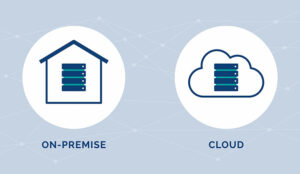The old “frog in boiling water” metaphor accurately describes today’s financial services industry. Disruptive technologies like AI and automation? Crank the heat up. Cybercriminals with a penchant for high-risk industries? Turn it up a little more.
Fintech start-ups and tech giants competing for market share? It’s simmering now. Did you hear about the Great Resignation? Suddenly the water is boiling, and the frog (hopefully) jumps out in time to save itself. How can traditional financial services providers ensure they don’t become obsolete?
They need to continually differentiate their services, make critical operational improvements, and orchestrate valuable new experiences for customers and employees.
This requires embracing modern and highly available infrastructure (which is often cloud-based), implementing an effective data management approach, and the integration of many applications and business processes, both in the cloud and on-premises.
It will also likely involve custom development, which may introduce additional security and compliance risks and require a degree of in-house talent that is often scarce.
To succeed, enterprises need to consider the following five areas:
1. Targeted Technology Investments
Developing new digital business and digitizing your core business require new investments in technology. How do you ensure you stay within budget? What should you prioritize as high-value investments? How do you track and maximize the value produced by those investments?
A sound digital engineering approach will answer these questions first and ensure that the project’s business KPIs remain a guidepost. A question on many peoples’ mind is “What should we do about the cloud?” Some go all the way to lift and shift their entire IT to the cloud.
Others adopt a hybrid model based on systematic cost-benefit analysis for individual applications or domains, and so they elect to keep a private data centre architecture.
2. Agile Development Practices
Agility and flexibility are paramount to competitiveness. Agile techniques like scrum teams, iterative development, continuous integration/continuous delivery (CI/CD), user involvement early in the development cycle, and productivity management contribute to faster time to revenue.
Some applications may still follow a waterfall cycle as long as their architecture doesn’t lend itself to rapid iterations, but agile development is generally becoming the norm.
No-code platforms can now support complex processes and should be considered for prototyping new applications and services and later for production.
3. Understanding and Mastery of Available Technology
No one vendor offers enterprises everything for their digital transformation in the CX area. Enterprises have to select and make several different technologies work together, from customer authentication to interaction management to back-end analytics to process automation.
Leading vendors are AWS, Cisco, Genesys, NICE CXOne, Google CCAI, Nuance, Verint, Avaya, Liveperson, Oracle, Twilio, UIPath, and others in the CX space. Understanding these offers and deploying experienced personnel is critical to success.
4. Modular Architecture
Composability and micro-services are two essential attributes of innovative applications. Composability means using APIs that access and leverage capabilities from other systems and micro-services.
The architecture is modular, with fine-grained and loosely coupled components that communicate via simple protocols.
5. Security and Risk Management
Financial institutions face an avalanche of compliance and security mandates, and migrating to the cloud requires providers to be certified against security and privacy (data residency, CCPA, GDPR, etc.) standards. As importantly, the implementation must be conducted according to security practices.
Most enterprises seek external help from digital engineering services providers when embarking on their digital transformation journey.
When considering a digital engineering services provider, one should consider these five dimensions and select companies with a proven track record and set of skilled engineers, architects, and project managers to deliver innovative solutions and desired business outcomes.
Servion’s Digital Engineering practice has been helping financial institutions for many years and has delivered many successful projects, including:
Automating 75 Banking Processes for a Leading Banking Group in Asia
The bank was looking for an RPA partner to automate various business units such as collections, card operations, and fulfillment. The objective was to reduce manual errors and improve productivity and efficiency in opening and maintaining cards and accounts.
Backed by certified engineers with RPA tools and implementation expertise, Servion conducted a thorough discovery with the client and mapped out a detailed design for a custom-built RPA solution.
The solution increased throughput by 400%, reduced staffing requirements by 69%, increased uptime by 50%, and reduced processing time by 34% – all while producing annual cost savings of nearly $600k.
Accelerating Dispute Management for a Leading Credit Card Issuer in the US
Servion designed an RPA solution to help this client automate the closure of dispute cases. The creation of a new claim in the dispute management system (Quavo) creates a shadow case in the bank’s incident tracking system that needs to be validated and closed on time.
The company manages a monthly average of 35,000 cases, requiring significant funds and effort. The automated solution can complete the tracking case closure process in four hours with multiple robots in action so agents have sufficient time to review reports – all with 100% accuracy.
Enabled Seamless Data Integration With a Custom-built Connector for a Large Bank in the US
Servion built a robust, scalable end-to-end connector that seamlessly ensures the data integration between Avaya POM and Nice WFM.
The solution included real-time data integration, enabling the connector to capture agent/state/call statistics data and also had the ability to feed historical data at periodic intervals to Nice WFM as upload files.
The solution provided higher visibility on queues, call status, workload, and agent performance for supervisors and better data integration for better resource and MIS planning.
Author: Guest Author
Published On: 14th Mar 2022 - Last modified: 15th Mar 2022
Read more about - Guest Blogs, servion



































